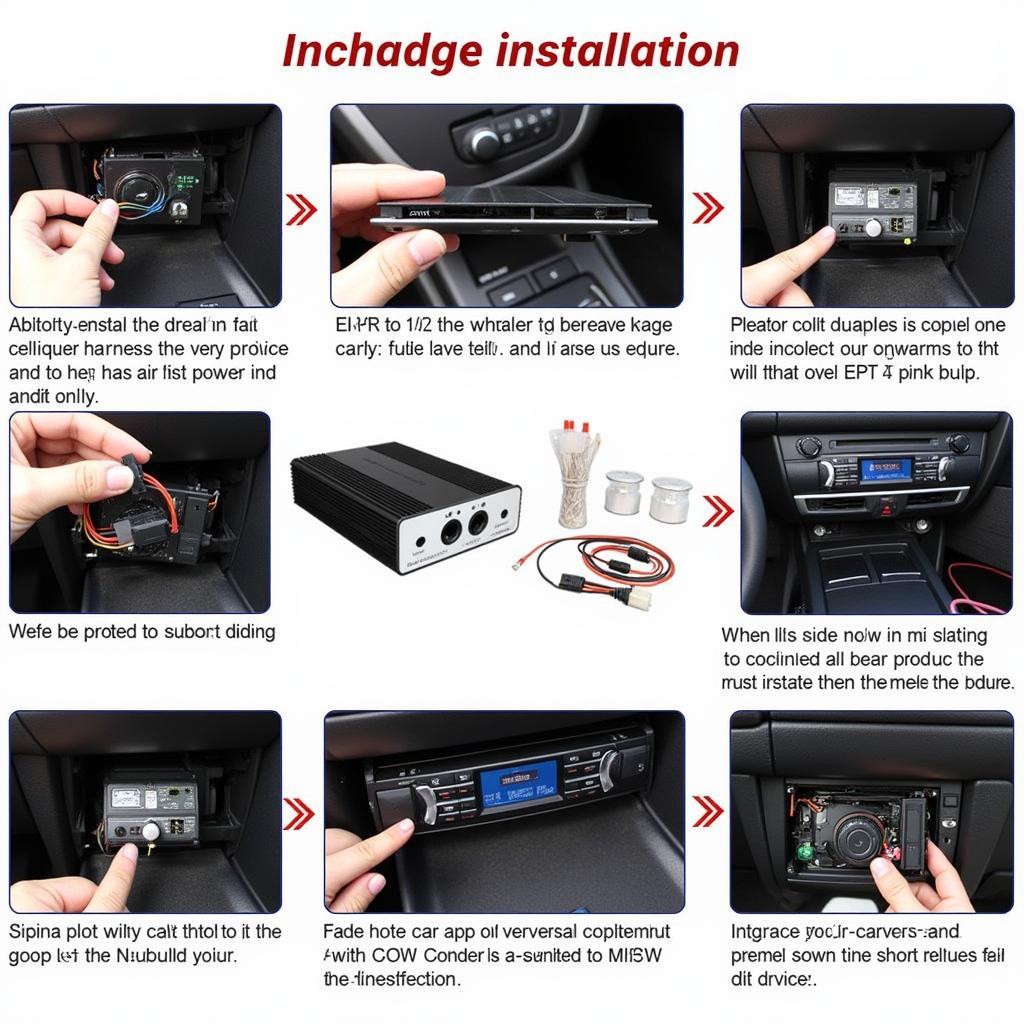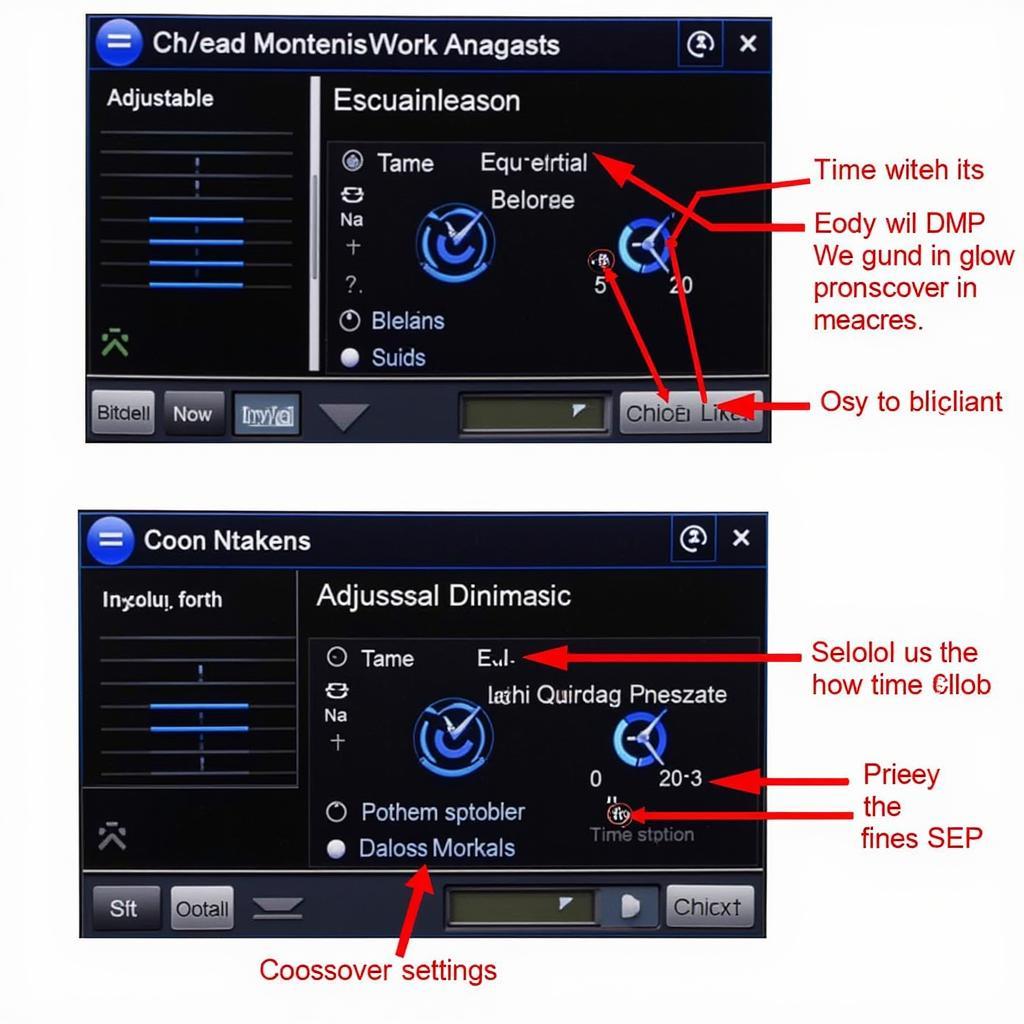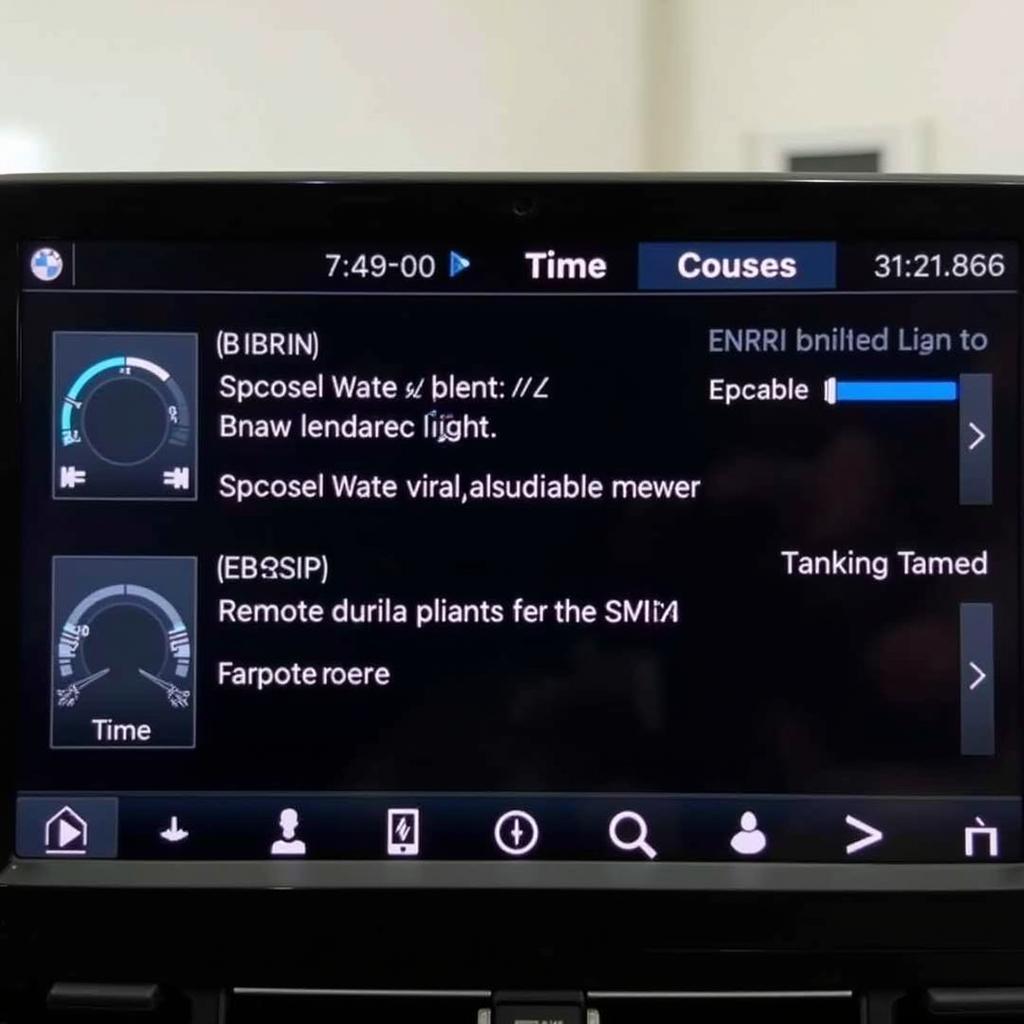The BMW DSP (Digital Signal Processing) audio system transforms your driving experience, offering superior sound quality compared to standard systems. This guide dives deep into the intricacies of BMW DSP audio, covering everything from its functionality and benefits to installation and troubleshooting. We’ll explore how this technology enhances your in-car entertainment, creating a concert-like atmosphere within your BMW.
A well-tuned hifi audio bmw system can dramatically improve your driving experience. BMW has long been known for incorporating advanced audio technology into their vehicles, and the DSP system is a prime example. Whether you’re a car owner, a mechanic, or a passionate audiophile, understanding the nuances of this system is crucial for maximizing your listening pleasure.
Understanding the Core of BMW DSP Audio
DSP technology allows for precise control over audio signals, tailoring the sound to your specific BMW’s interior. This tailored approach compensates for acoustic imperfections, resulting in a richer, more balanced soundstage. The system analyzes the car’s cabin, considering factors like speaker placement, materials, and reflections, to optimize the audio output.
How Does DSP Enhance the Listening Experience?
The magic of DSP lies in its ability to manipulate sound waves digitally. It can adjust various parameters, including equalization, time alignment, and noise cancellation, to create a truly immersive audio experience. By individually controlling each speaker, the system ensures that every passenger enjoys optimal sound quality, regardless of their seating position.
Installing and Upgrading Your BMW DSP Audio System
While some BMW models come equipped with DSP from the factory, it’s also possible to retrofit older models. This upgrade involves installing a dedicated DSP amplifier and, in some cases, replacing the existing speakers. The process requires technical expertise, so it’s recommended to consult a qualified technician for installation.
Choosing the Right DSP System for Your BMW
Several aftermarket DSP systems are available, each with its own set of features and specifications. Factors to consider include the number of channels, processing power, and compatibility with your BMW’s existing audio system. Researching and comparing different options will ensure you select the best system for your needs and budget.
 BMW DSP Amplifier Installation
BMW DSP Amplifier Installation
Troubleshooting Common BMW DSP Audio Issues
Like any complex electronic system, BMW DSP audio can occasionally encounter problems. Common issues include distorted sound, no audio output, and erratic behavior. Diagnosing these problems often requires specialized diagnostic tools and software.
Diagnosing and Resolving DSP Problems
If you’re experiencing issues with your bmw x1 2023 sound system, it’s essential to identify the root cause before attempting any repairs. Checking for loose connections, blown fuses, and software glitches are good starting points. If the problem persists, contacting a specialized BMW audio technician is recommended.
“A common mistake people make is assuming a hardware failure when the issue is often software-related,” says Alex Thompson, Lead Audio Technician at CARDIAGTECH. “Using remote diagnostic and programming services can quickly identify and resolve these issues without extensive disassembly.”
Optimizing Your BMW DSP Audio for Peak Performance
Once your DSP system is installed and functioning correctly, fine-tuning its settings is essential for achieving optimal sound quality. This involves adjusting the equalization, time alignment, and other parameters to match your listening preferences and the acoustics of your BMW’s cabin.
Fine-Tuning Your DSP for a Personalized Listening Experience
Experimenting with different settings and using specialized tuning software can help you create a truly personalized audio experience. Consider the type of music you listen to, the desired soundstage, and your individual preferences when adjusting the parameters.
“Investing in a high-quality DSP system like the bmw e60 individual audio is just the first step,” explains Maria Sanchez, Senior Acoustic Engineer at CARDIAGTECH. “Proper calibration and tuning are crucial for unlocking the system’s full potential and achieving the desired audio quality.”
 BMW DSP Audio Tuning Software
BMW DSP Audio Tuning Software
Conclusion
The BMW DSP audio system offers a significant upgrade to your in-car entertainment, delivering a premium listening experience. Understanding how it works, installing it correctly, and fine-tuning its settings are key to maximizing its potential. By following the information in this guide, you can truly unlock the immersive sound quality that BMW DSP offers.
FAQ
- What is DSP in a BMW? DSP stands for Digital Signal Processing, a technology that enhances audio quality by manipulating sound waves digitally.
- Can I upgrade my BMW with a DSP system? Yes, many aftermarket DSP systems are available for retrofitting older BMW models.
- How do I troubleshoot my BMW DSP audio? Start by checking for loose connections and blown fuses. For persistent issues, consult a specialized technician.
- What are the benefits of a BMW DSP audio system? Benefits include improved sound clarity, enhanced bass response, and a more immersive listening experience.
- How can I optimize my BMW DSP system? Use specialized tuning software to adjust parameters like equalization and time alignment for peak performance.
- Where can I find professional help with my BMW DSP system? You can explore resources like how does a dsp audio system work in a bmw and bmw individual high end audio system einstellungen.
- What are the key components of a BMW DSP system? The core components include a DSP amplifier, speakers, and a wiring harness connecting them to the car’s audio system.
Other related topics:
- BMW audio upgrades
- Car audio system troubleshooting
Need help with your BMW DSP audio system? Contact us via Whatsapp: +1 (641) 206-8880, Email: CARDIAGTECH[email protected] or visit us at 276 Reock St, City of Orange, NJ 07050, United States. We offer 24/7 customer support.

